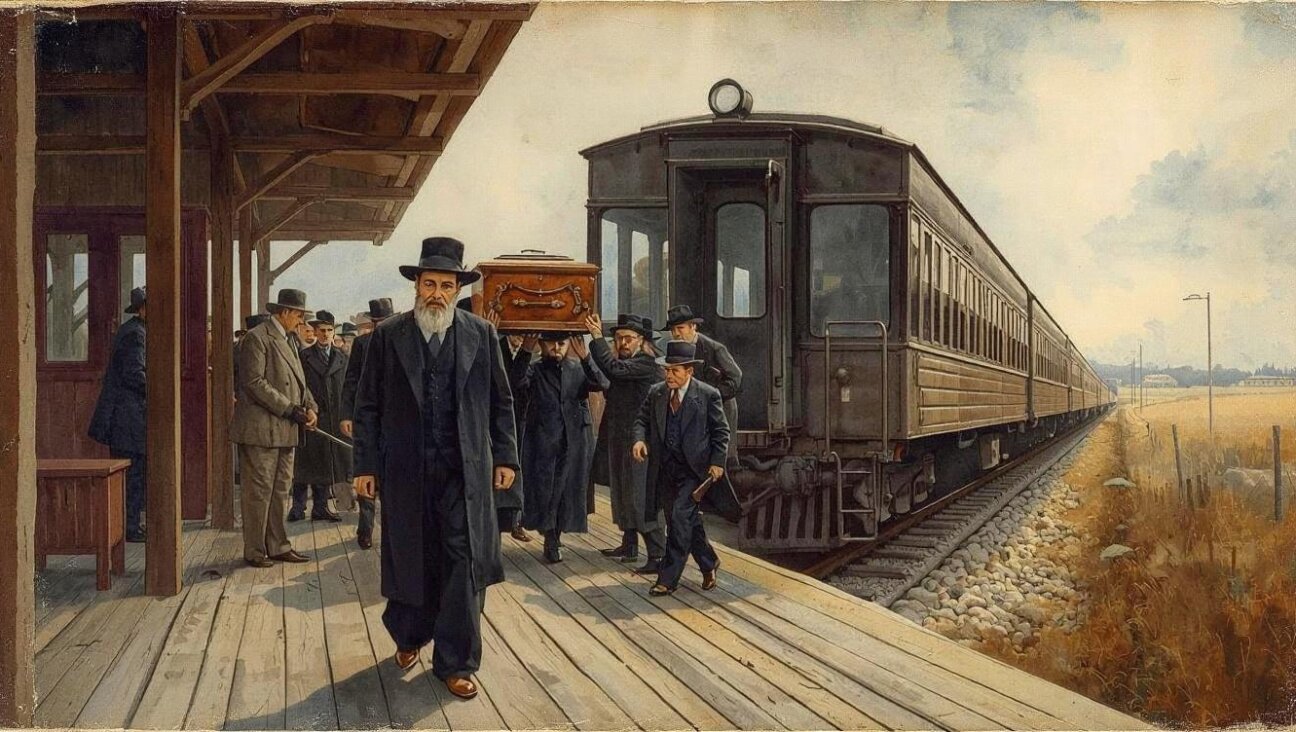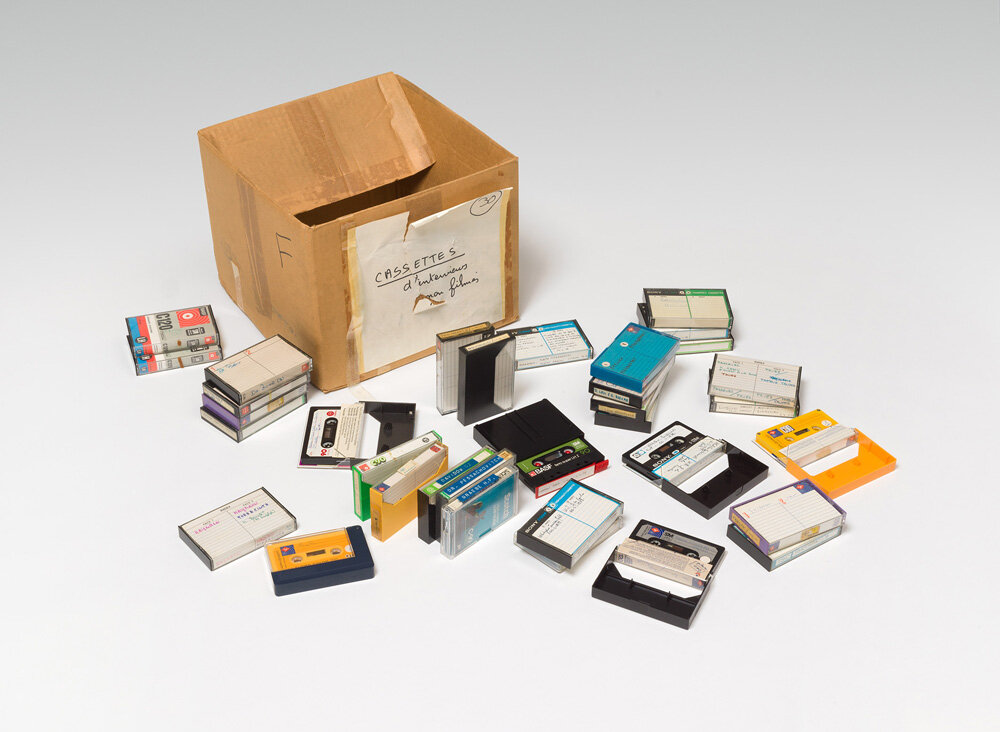A Jewish Art Paradise at the Vatican

You Could Look It Up: Just about every one of the 300 figures Michelangelo painted on the Sistine Chapel ceiling was Jewish. Image by Getty Images
A Jew visiting Rome with the hope of finding some aspect of her heritage may be drawn to the synagogue on the banks of the Tiber River, or to wander through the ghetto, perhaps to sample carciofi alla Giudia, Jewish-style artichokes. She is unlikely to consider the Vatican to be a source of Jewish art.
In fact, however, the Vatican holds world-famous works of art with Jewish themes. Yet their essential links to Judaism and its teachings remain little known. To understand the nature of these artworks’ relationship to Judaism, one must travel back in time more than 500 years.
In a palazzo in Florence, Italy in the 1480s, a youth named Michelangelo Buonarroti immersed himself in the study of Torah, Talmud and Kabbalah. Jews had previously been banned from Florence, but the powerful, wealthy family of Michelangelo’s patron, Lorenzo de’ Medici, was welcoming Jews back to the city and fostering the study of Judaism. At the very same time that the Holy Inquisition was working to wipe out Jewish culture and knowledge on the continent, the young sculptor was tutored alongside the de’ Medici children by scholars who valued Jewish thought.
One of Michelangelo’s teachers was the renowned Renaissance philosopher Marsilio Ficino, a Catholic priest who knew Hebrew. In his writings, Ficino attempted to harmonize Platonism with monotheism, which for him meant Judaism as well as Christianity.
Giovanni Pico della Mirandola, whose private library of Judaic literature is thought to have been the largest of any European gentile, was an even more influential mentor to the young Michelangelo. Pico had studied with Elia del Medigo and other important Jewish scholars, knew Hebrew and Aramaic, and was well versed in Torah, Talmud and Midrash. Like Ficino, Pico sought to find philosophical harmony among various wisdom traditions such as those of paganism, Christianity, Islam and Judaism. But Pico went farther than Ficino, suggesting that Judaism, Egyptian mysticism, Platonic philosophy, and Christian theology all referenced the same deity. This was considered heresy by the Church, which had him arrested and imprisoned. Only because Lorenzo de’ Medici paid for his release and thenceforth protected him from the Church was Pico able to continue writing and teaching.
Inspired by Pico and Ficino, Michelangelo immersed himself in the Jewish mystical tradition. In fact, according to Rabbi Benjamin Blech, coauthor of “The Sistine Secrets: Michelangelo’s Forbidden Messages in the Heart of the Vatican” about Michelangelo’s affinity for Judaism, the artist was drawn to Jewish themes more often than to Christian ones. Certain kabbalistic ideas especially appealed to Michelangelo, such as the notion that God is a harmonic whole encompassing both male and female; that the human body possesses attributes of God; and that sex is a positive force. Michelangelo determined early on that his work should “preach reconciliation… between the Jewish Bible and the New Testament, and between Christian and Jew,” in the words of the art historian Enrico Bruschini.
Kabbalah and other traditions of Jewish thought so influenced Michelangelo that he incorporated them into many works of art. But he was forced to conceal them because his commissions came from popes who did not share his positive view of Judaism. In the Sistine Chapel ceiling, a work intended to illustrate the promise of Christian redemption, “Michelangelo performed an immense and ingenious act of concealment,” Bruschini noted. Under “perilous conditions” and “at great personal risk,” the artist used Jewish symbols and allusions that were incomprehensible to not only his patron the pope but also most of the 25,000 daily visitors to the Vatican Museums today.
To see the Sistine ceiling as Michelangelo intended, and to understand its true meaning, a pair of binoculars is handy. When you enter the chapel, which is at the end of the museum tour, do not look up until you’ve crossed to the far end of the room, where the exit door is located. Now take out your binoculars and admire the largest fresco in the Catholic world.
Amazingly, not one of the nearly 300 figures Michelangelo painted on the ceiling is Christian. Its subjects are 5% pagan and 95% Jewish, according to Rabbi Blech. Michelangelo’s work is “not only faithful to the Hebrew Bible, but even more so to the Kabbalah.”
You see seven Hebrew prophets — Zechariah, Joel, Isaiah, Ezekiel, Daniel, Jeremiah and Jonah — which Michelangelo arranged to correspond with the seven spiritual steps to God on the kabbalistic Tree of Life: Malchut, Yesod, Hod, Netzach, Tiferet, G’vurah/Din and Chessed. Lest you mistake the prophets’ identities, Michelangelo supplied captions for them all. In addition, he displayed his knowledge of Hebrew, painting an alef and an ayin on a scroll below and to the left of the prophet Jeremiah. A priest who cannot distinguish between alef and ayin, according to the Talmud, is not fit to serve in the temple.
In the four corner spandrels, Michelangelo painted four heroic Jews, two male and two female, who in the Book of Genesis saved their people. Judith with the head of Holofernes appears on one side of the prophet Zechariah, with David slaying Goliath on the other. Opposite them, on either side of the prophet Jonah, are Esther slaying Haman, and Moses with the bronze serpent. Next to Esther, in a curved lunette, you see Aminadab, the father of good children in the Talmud. A bright yellow circle is sewn on the upper sleeve of Aminadab’s cloak, a historically accurate detail that became visible during a late-20th-century cleaning and restoration that brightened the frescoes’ colors and clarified their messages.
In the series of panels at the center of the ceiling, Michelangelo presents the creation of the world according to the Torah, as explicated by his teacher Pico in Heptaplus, a kabbalistic commentary on the first 26 verses of Genesis. In the beginning, a bearded God raises his arms and twists his torso to separate light from darkness. Then, airborne, he divides water from earth. With pointed index fingers he creates sun and moon.
In the most famous panel, God’s finger practically touches the finger of a recumbent Adam. Behind God is a swirl of pink cloth that looks like the cross section of the right side of the human brain, complete with the brain stem, something Michelangelo probably observed during dissections. In Kabbalah, the right side of the brain is associated with wisdom, and a Jewish daily prayer
thanks God “who formed humanity [the Adam] with Wisdom.” Two panels over, in the Garden of Eden, the serpent, who has the upper body of a woman, hands Eve the forbidden fruit, which, as in Jewish tradition, is a fig.
If you are not too tired, you may now turn back to where you entered the chapel to see another large fresco by Michelangelo, commissioned by a different pope more than 20 years after the completion of the ceiling. Pope Clement VII, who as a de’ Medici was familiar with the liberal education Michelangelo had received in Florence, deliberately chose a subject that seemed unlikely to incorporate Jewish themes: the Last Judgment.
Nevertheless, Michelangelo’s first move was to reshape the wall to resemble the two adjacent tablets with curved tops of the Law of Moses. The fresco is a unified scene covering the entire wall, with evil souls at the bottom, descending into hell, and righteous souls at the top. At the top center, Jesus Christ greets the righteous as they ascend to paradise. Slightly above and to the right of Jesus, Michelangelo painted two Jews, identified by their hats, one double-pointed and the other yellow, which Jews were forced to wear. Lest anyone miss the Jews, an angel floating above Jesus’s head points at them. While Church theology did not allow for the salvation of Jews, in Michelangelo’s vision of the end of the world Jews inhabit paradise.
Following your museum tour, consider stepping inside Saint Peter’s Basilica to see “the world’s most famous Christian statue,” which, according to Rabbi Blech, also “has a Jewish secret hidden within it.” Michelangelo sculpted his “Pietà” long before his Sistine work, soon after arriving in Rome from Florence when he was only 24. According to the Church, Mary was in her 50s at the time of the crucifixion, but Michelangelo’s Mary looks no older, possibly even younger, than her 33-year-old son. One explanation for her youthfulness is that Michelangelo knew the Midrash about Sarah, one of Mary’s Hebrew prototypes. According to Rashi, Sarah was so spiritually pure that she always appeared to be about 20.
Now you may wish to rest awhile and enjoy some Jewish-style artichokes.
Eve LaPlante is the author most recently of “Marmee and Louisa: The Untold Story of Louisa May Alcott and Her Mother.” (Simon and Schuster, 2012)
















